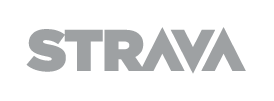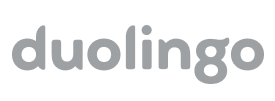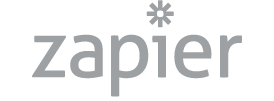Episode #4
Colleen Fuller: Applying the tools of agile development in HR to drive success
In this episode:
When do you know that your organization’s performance management approach needs a revamp? What would happen if you stopped having performance appraisals and traditional 360 feedback altogether? Colleen Fuller, Head of Talent and Experience Transformation at Vistaprint, shares in this episode of the “Human-friendly Workplace” podcast how they applied the tools of agile development in HR to drive success. Colleen explains why one-size-fits-all approaches don’t work for today’s workforce and how listening to employees and creating real conversations helps create a human-friendly workplace culture.
Get notified when season 2 starts
About Colleen & Vistaprint
Vistaprint empowers millions of business owners worldwide to market themselves professionally by creating the customized materials they need to get their message across.
Colleen Fuller, who has been with Vistaprint for a full 14 years, is responsible for driving and transforming all aspects of the employee experience. This includes growth and development, the role of leadership, performance and feedback, hiring and onboarding, and rewarding and recognizing. Under her leadership, the Talent and Experience Transformation team has received awards for their human-focused approach to the performance and feedback experience, and it has recently been recognized in Forbes for their transformative approach to productizing the employee experience.
Moving to an agile mindset
There are many people talking about employee experience these days, but Colleen and her team are actually doing it, overseeing around 3,000 of Vistaprint’s employees. In the past three to four years, Vistaprint has been going through a transformation brought on by changes in the market requiring them to become more nimble. The need to get products and services faster to customers meant Vistaprint had to change the way they were working.
Vistaprint used to be more functionally oriented, which resulted in departments often having conflicting priorities. Vistaprint then decided to apply a more agile approach, which Colleen defines as “both a mindset and a set of principles to get work done.” While originally a development and project management tool, the agile approach around delivering value in smaller increments and continuously testing and iterating can be applied to any kind of work.
At Vistaprint, it meant creating cross-functional teams that had full autonomy over outcomes. Yet since this also meant managers no longer had a direct line of sight to what their employees were doing everyday, it prompted Colleen and her team to ask themselves: “Is the way we are doing performance management today actually as effective and as valuable as we want it to be?” They realized they needed to re-evaluate the different talent management processes.
Gathering insights through open space sessions
Their first step Colleen and her team took was going external and researching to gather insights by attending events, listening to podcasts, etc. Their initial thinking was especially shaped by companies like the GAP, Adobe, and Microsoft.
The next step was getting in front of employees. “While we had evidence to believe we weren’t getting the value out of it [performance reviews], people were still very reluctant to let it go,” Colleen says. Vistaprint held open space sessions for everyone in their US and Spain offices. An external agile expert came in that suggested they pose the provocative and open question, “What if we didn’t have performance reviews?” which prompted people to think differently and get all their ideas out there. Participants then voted on which topics were the most interesting to them.
This was scary at first for Colleen and her team since they couldn’t be sure employees would agree performance management would be one of those topics of interest. It was voted an integral issue in the end, but more importantly, this open approach allowed Colleen and her team to gather continuous feedback from a wide range of employees. This in turn resulted in the framing of a problem statement, defining Vistaprint’s why, and what outcomes they wanted to reach. As Colleen puts it: “We sat down and started having real conversations with people. When you engage different groups of people, you can learn so much.”
“We sat down and started having real conversations with people. When you engage different groups of people, you can learn so much.” — Colleen Fuller, Head of Talent & Experience Transformation, Vistaprint
Replacing formal performance reviews and ratings with real conversations
Learnings from the open space sessions included that people felt the yearly feedback they were getting wasn’t timely. They were working in an agile way and getting quick feedback on the products they were working on, but were not getting that same quick feedback on how they were performing. Vistaprint also had a complex 360 process but employees felt getting someone else’s perspective relayed through their manager, who couldn’t provide context or details, wasn’t helpful. Finally, Vistaprint’s former competency-heavy model had managers trying to force-fit feedback into ten competencies which then didn’t make sense to employees.
This all lead to Colleen and her team deciding to tackle the question: “Can we move to a place where feedback is in real time, it’s relevant, it’s always with good intent?” To do so, they decided on something drastic: they removed the 360 review process and the rules and restrictions on giving feedback, encouraging more real conversations. While not everyone has been happy with this change, Colleen and her team continuously work with leaders and managers to develop new approaches. One size does not fit all she emphasizes: “You have to create your backbone philosophy of what you’re trying to do, but then figure out how you can apply it differently when needed.” One big change has been making feedback conversations employee-driven instead of manager-driven.
Colleen has seen this new approach resolve previously deeply-rooted issues thanks to a deepening of relationships and employees learning how to give and receive feedback. Vistaprint even has feedback champions who facilitate feedback exercises and help teams when they need it.
Colleen’s advice on creating a human-friendly workplace culture
Colleen’s advice on how to create a human-friendly workplace is “engaging the organization, engaging all your employees in answering that question.” Though you and your HR team might think you know what the organization needs, when you engage with everyone within the organization, you might end up completely changing direction. It is also equally as important to remember to stay flexible and apply different approaches to different groups.

Jason Lauritsen
Keynote speaker, author and employee engagement consultant
Jason Lauritsen is an employee engagement and workplace culture expert who will challenge you to think differently.
A former corporate Human Resources executive, Jason has dedicated his career to helping leaders build organizations that are good for both people and profits.
www.JasonLauritsen.com






